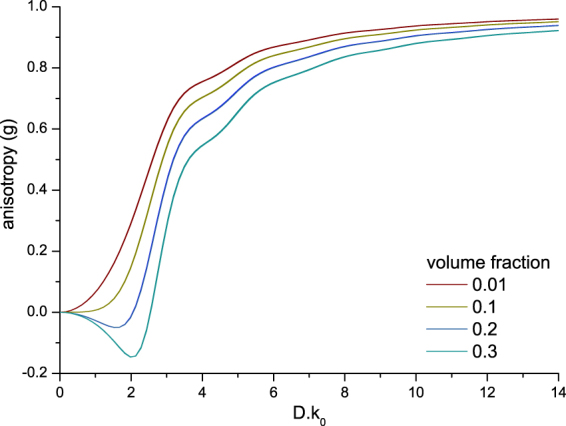Figure 3.

Calculated scattering anisotropy (g) as a function of optical particle diameter (D. k0, k0 = 2π/λ0, vaccuum) for increasing volume fractions (0.01, 0.1, 0.2 and 0.3) at three common OCT wavelengths and bandwidths: λ0 = 850 (∆λ 65) nm, λ0 = 1050 (∆λ 81) nm and λ0 = 1300 (∆λ 100) nm (the curves of the different wavelengths overlap). The used refractive index of the medium and silica beads were 1.324 and 1.425 at 1300 nm respectively, the refractive indices were varied with wavelength and bandwidth for the calculations. The anisotropy (g) is calculated as the average cosine of the concentration-dependent phase function. Note that for high volume fractions, g can become negative indicating a predominantly backward angular scattering pattern.
